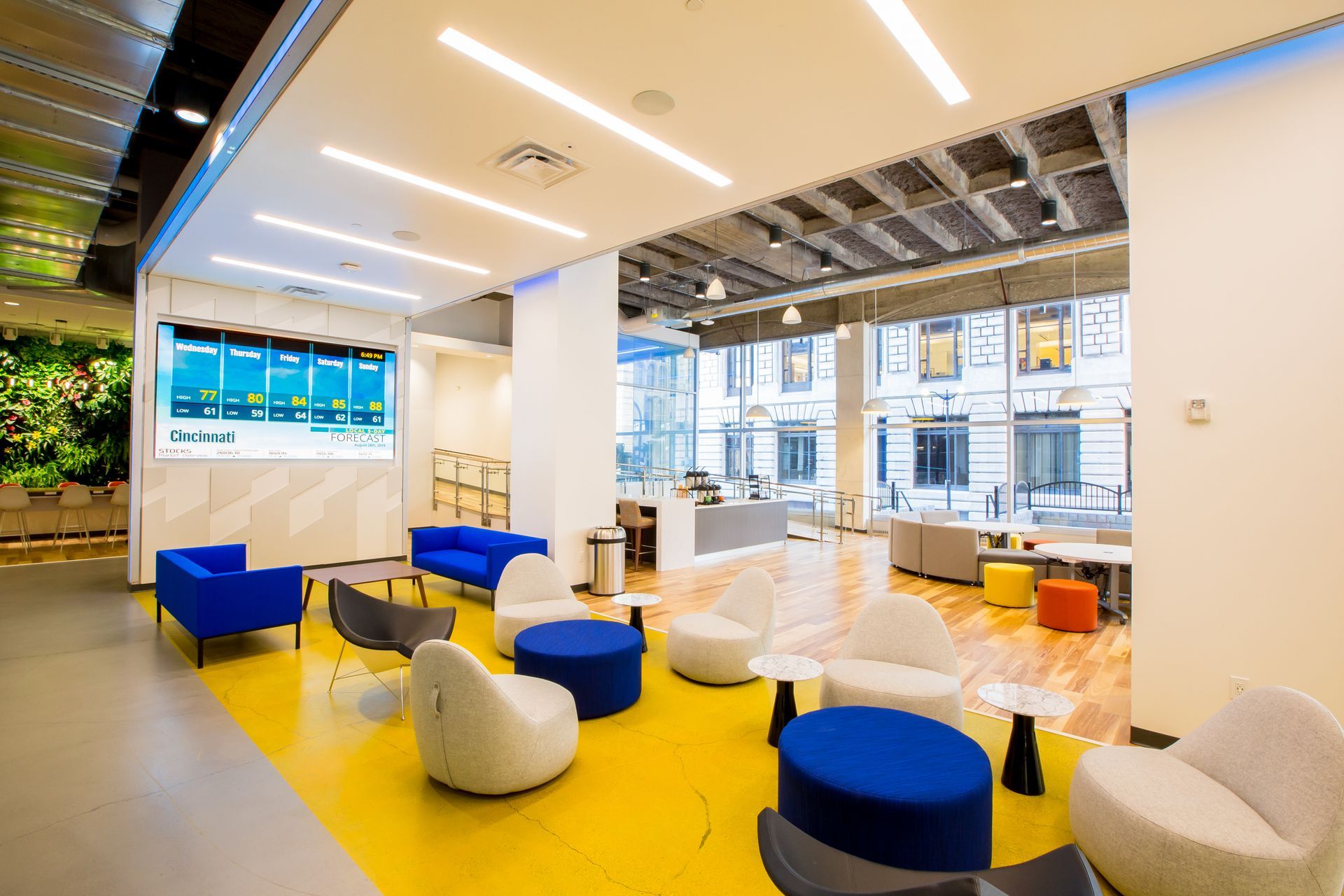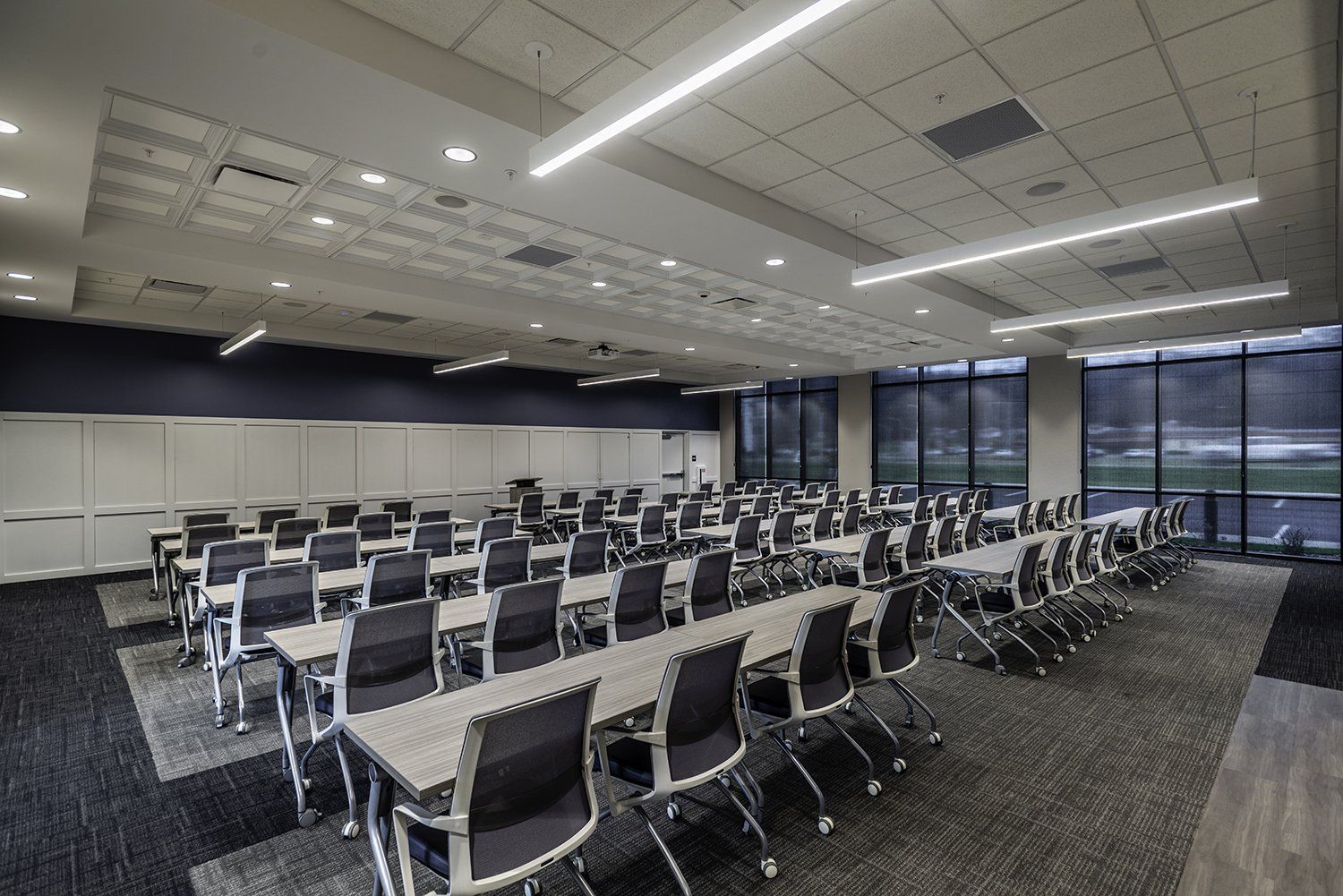By: Jeff Klump,
President of K4 Architecture + Design
Menu
Follow us on:

The modern community bank is facing a generational crossroads. Baby Boomers still value face-to-face service. Gen X often wants a mix of personal touch and digital convenience. Millennials expect flexibility and efficiency. Gen Z? They’re seeking purpose-driven brands that align with their values and communicate in a way that feels authentic. The question for community bankers is no longer whether to adapt - but how?
Today’s most successful financial institutions are reimagining their branches not just as places to transact, but as experiences to connect, educate, and build long-term relationships. The way your branch looks, feels, and communicates speaks volumes to customers -young and old - about who you are and whether you’re prepared to meet their needs.
For community banks, creating multi-generational relevance in today’s rapidly shifting landscape requires a thoughtful blend of physical branch design and strategic branding communicated both online and off. By combining architectural expertise with modern marketing insights, banks can craft branch experiences that resonate across age groups - balancing personal service with digital convenience, and tradition with innovation. This integrated approach helps ensure that both the space and the message reflect the evolving expectations of customers from every generation.
In the 1980s and 1990s, branch design followed a “one-size-fits-all” approach—using a single prototype across markets. Today, that strategy falls short. Modern branch design should function as a flexible “kit-of-parts,” tailored to each market’s demographics. With intentional design, branches can bridge the growing gap between generations and better serve diverse needs.
Baby Boomers still appreciate traditional banking hallmarks: a warm welcome, face-to-face interactions, and pride of community. But that doesn’t mean they want to step into a time capsule. On the other end of the spectrum, Gen Z is more likely to visit a branch if it offers convenience, efficiency, purpose, or a community-oriented vibe that reflects their lifestyle and values.
A solid approach is to start by thinking in layers. The most effective branches today are designed with flexibility at their core - accommodating a range of services and customer preferences. That could mean creating:
This type of modular, multi-use space doesn’t just future-proof your branch - it shows customers that you value their unique needs. Whether they’re walking in to open their first savings account or discuss retirement strategies, each generation should feel equally comfortable and seen in your space.
While physical spaces lay the foundation, your brand and marketing strategy are what create ongoing connection. The look and feel of your marketing - and where, how, and to whom it speaks - will determine how well you stay top-of-mind across generations.
This is where consistency meets customization. Community banks often excel at personal service but struggle to maintain a unified message across all physical and digital touch points and locations. A strong brand should feel consistent whether it’s on a billboard, a website, an ATM screen, or a mobile app. But that consistency doesn’t mean one message fits all.
Each generation responds differently to tone, channel, and purpose:
A future-focused marketing strategy doesn’t just segment your audiences by age group, it understands how to tell the same story in different ways. It’s about brand fluency, not brand fragmentation.
Brand consistency audits are a valuable tool for financial institutions to identify messaging that may feel outdated, disjointed, or overly generic. These audits help uncover gaps between brand identity and customer perception across various platforms and materials. A good start is to ask yourself the following questions:
From there, institutions can develop multi-generational content strategies that speak to each audience in a tone and format they trust—while maintaining a clear and cohesive brand voice.
Community banks aren’t just serving different generations—they’re often serving different types of communities. The needs of an urban customer in a walkable neighborhood might look very different than those of a rural customer in an agricultural town. Yet, the brand promise should feel cohesive across all touchpoints.
Branch design can and should adapt across different environments while maintaining a unified brand identity. Whether implementing a traditional branch, a microbranch, loan production office (LPO), or café-style concept, it is essential to understand the demographic and behavioral patterns of the local market. This insight ensures that each location meets community-specific needs while still reflecting the institution’s overall brand and values. Testing a concept branch in a new or evolving market can also provide valuable data on customer preferences and engagement—allowing the bank to expand strategically without the commitment of a full-scale branch investment.
Market-specific strategies include integrating community spaces into branch layouts to encourage events, classes, and partnerships; offering co-working areas that appeal to small business owners, remote workers, or entrepreneurs; and highlighting mobile and self-service banking options in locations with limited access or varying comfort levels with technology.
Designing with context isn’t just about making smart use of space—it’s about building trust by showing that you’ve listened and adapted.
One of the biggest hurdles to adopting a multi-generational strategy is fear of change. Many community banks worry that modernizing too quickly might alienate loyal customers who have been with them for decades. The truth is: you don’t have to choose between tradition and innovation. You can have both.
In fact, your institution’s legacy can be one of your greatest assets - it just needs to be told in a way that feels relevant. Customers of all ages value authenticity. If your message and experience are rooted in genuine community service, strong relationships, and local pride, that will resonate across all generations. The key is how you translate those values into physical environments and modern marketing strategies that align with today’s expectations.









